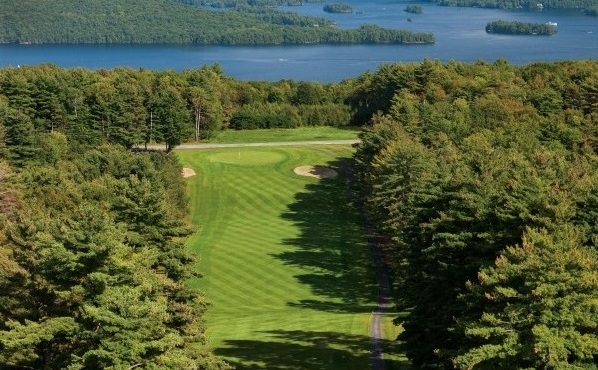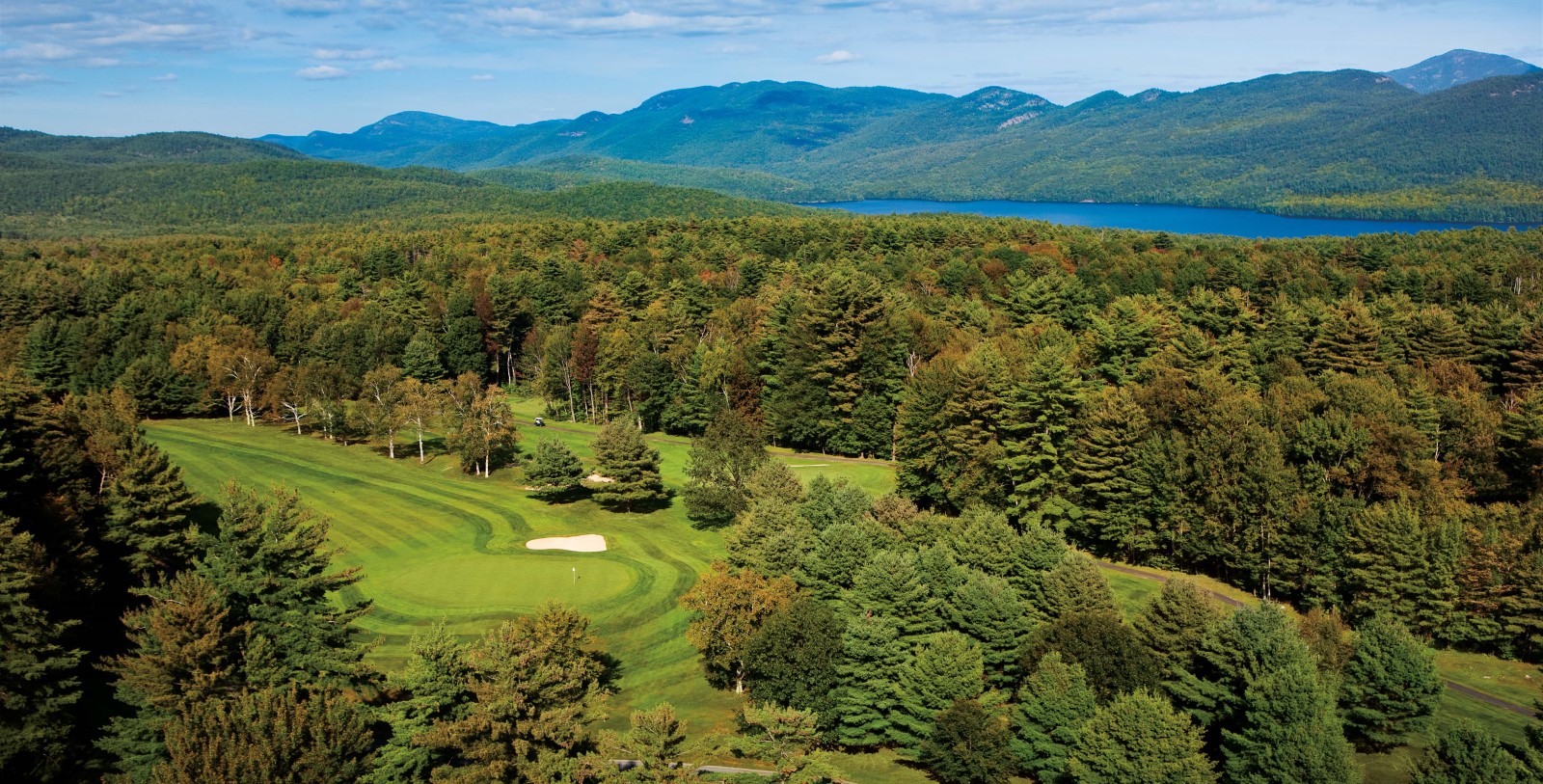Receive for Free - Discover & Explore eNewsletter monthly with advance notice of special offers, packages, and insider savings from 10% - 30% off Best Available Rates at selected hotels.
sagamore golf
Discover The Sagamore Golf Course, which was originally designed by the renowned Donald Ross at the height of the Roaring Twenties.

The Sagamore Resort – Golf
Get introduced to The Sagamore Resort’s historic golf course, which was originally designed by Donald Ross at the height of the Roaring Twenties.
WATCH NOWThe fairways at The Sagamore Resort’s championship golf course are lush, narrow, and lined with beautiful hardwood. Deep bunkers surround the undulating greens, creating an iconic landscape that has enchanted visiting golfers for generations. The site was originally designed by Donald Ross, a Scottish immigrant and golf course architect responsible for creating many legendary destinations. An apprentice of Old Tom Morris, Ross had trained at St Andrews in the 1890s before finally immigrating to the United States. He eventually built dozens of iconic fairways throughout the country, including Aronimink Golf Club, Seminole Golf Club, Oak Hill Country Club, and the celebrated Pinehurst No. 2. Ross himself built The Sagamore Resort’s golf course in 1928, although the business would not acquire the venue until a year later. (Contemporary players today should look up when they reach the first hole; Ross designed it with the view in mind.) The resort had specifically bought the course at a discounted rate due to the harsh economic effects created by the Great Depression. In fact, most of the money used to obtain Ross’ course came from a wealthy entrepreneur who had regularly vacationed at The Sagamore Resort. Renamed as the “Sagamore Golf Course,” Ross’ beautiful series of fairways attracted countless guests from major metropolises like New York City and Boston. All who came found the 18-hole, par-70 course to be absolutely astounding. Since then, the Sagamore Golf Course has continued to be one of upstate New York’s most celebrated venues for golfers. While the hotel is on an exclusive island on Lake George, the golf course is located directly across the water on the mainland. The area gives guests access to a championship course with stunning scenes of the lake and Adirondack mountains nearby. Shuttle service is provided between the golf course and the resort.
-
About the Location +
The Sagamore Resort resides within the community of Bolton Landing—a hamlet located within the greater Town of Bolton. Bolton itself is a small bucolic town of just a few thousand people that rests on the shoreline of Lake George in New York’s famed Adirondacks. Bolton was originally founded at a time when Lake George sat at the frontier of New York’s expanding borders in the years immediately following the American Revolutionary War. Before the conflict, the area had long been occupied by the Mohawk of the Iroquois Confederacy. Further to the north were the French colonials of New France, whose bastion of power was situated across the St. Lawrence River in Québec City. In fact, some of the first Europeans to explore the region were French, as the great Samuel de Champlain investigated the region in 1609. Several decades later, a French-Canadian Jesuit missionary named Isaac Jogues returned to the area and gave the lake its first name—Lac du Saint-Sacrament. Once the Netherlands officially lost control over the lower regions of New York after the Second Anglo-Dutch War, British and French settlers began pushing further into the Adirondacks. This tensions finally reached a breaking point in the 1750s, when France and the United Kingdom fought for control over the region during the Seven Years’ War.
The conflict in the colonies became known as the “French and Indian War.” The war itself eventually arrived at the Lac du Saint-Sacrament in September of 1755, when an army of colonial British Americans and Mohawk Indians fought and defeated the French. Led by Sir William Johnson, the British army seized the entire area and renamed it “Lake George” after King George II. They even commemorated the fight as the “Battle of Lake George.” In the days following the battle, Johnson constructed his soldiers to erect Fort William Henry at the southern end of the lake. The fort itself was christened in honor for the king’s grandson, Prince William Henry. But the French did not abandon the region quietly, constructing a massive fortification called Fort Carillon at the opposite end of the lake. The French reinforced the citadel’s garrison and assigned a new commander, Louis-Joseph de Montcalm. In 1757, Montcalm besieged Fort William Henry and set it ablaze when the British finally surrendered. As the British retreated to Fort Edward further south along the Hudson River, Native Americans allied to France ambushed the column. The assault would forever be known as “The Massacre at Fort William Henry.”
France ultimately lost the Seven Years War, which gave nearly all its colonial possessions in Canada to the United Kingdom. Despite the removal of the French threat from North America, the British still saw fit to reinforce its less densely populated territories. Lake George itself served the strategically important role of protecting the main line of communication between the major settlements of Montréal and New York City. The British subsequently renovated the two forts at either end of Lake George, filling them with new garrisons. The importance of the lake became more apparent when the Thirteen Colonies rebelled against the British Crown in the 1770s. Among the first acts by American patriots was the capture the arsenal at Fort Carillon, which had recently been renamed as “Fort Ticonderoga.” In 1775, a motley crew of frontiersmen known as the “Green Mountain Boys” overwhelmed the citadel’s soldiers. Led by Benedict Arnold and Ethan Allen, the American soldiers subsequently moved its munitions to the nascent Continental Army stationed outside of Boston. While the British briefly regained Fort Ticonderoga in 1777, the Americans successfully recaptured it a final time after the Battle of Saratoga a year later.
Once peace arrived in the newly formed United States, small towns like Bolton began appearing throughout the Adirondacks. Americans soon recognized the uniqueness of the area’s inherent beauty, especially Lake George. Future U.S. President Thomas Jefferson encapsulated this perception brilliantly in a letter he penned to his daughter, in which he stated: “Lake George is without comparison, the most beautiful water I ever saw.” Another U.S. President would find the area similarly enchanting more than a hundred years later—Theodore Roosevelt. Long an avid outdoor enthusiast, Roosevelt often traveled from his home in Long Island to visit Lake George. In fact, he was hiking nearby Mount Marcy when word reached him of President William B. McKinley’s death. By this point, many Americans had constructed spectacular summer homes all along Lake George, making it one of the most exclusive places to stay in the United States. Several well-known artists began establishing several art colonies, too, including Martin Johnson Heade, John F. Kensett, Frank Vincent DuMond, E. Charlton Fortune, and George O’Keefe. But Lake George had already been immortalized in other forms of art, the most notable of which was James Francis Cooper’s classic novel, The Last of the Mohicans. Originally published in 1826, it has undergone several reprints and was even turned into a movie.
-
About the Architect +
Donald Ross: Few other golf course designers have had such an impact on the sport of golf than the legendary architect Donald Ross. Born in Dornoch, Scotland, Ross’ legendary career began when he apprenticed under Old Tom Morris at historic St. Andrews during the late 1890s. He harnessed several important skills from Morris that ranged from club maintenance to landscaping. Ross then used his education to parlay a job at the Royal Dornoch Golf Club near his childhood home. Unfortunately for Ross, the pay was abysmal. With the encouragement of Scottish expat named Robert W. Willson, Ross decided to try to find more rewarding work at one of the many new professional golf facilities that had started opening across the United States. Willson subsequently financed Ross’ trip across the Atlantic in 1899, who helped him settle down just outside of Boston, Massachusetts. Ross accepted a job as the resident golf pro at the Oakley Country Club, where he left an immediate impression upon its members. Word soon spread of his talents, which eventually attracted the attention of prominent businessperson James Walker Tufts. In the midst of developing the resort town “Pinehurst” within the North Carolina sandhills, Tufts decided to hire Ross to head the new settlement’s golf club. Ross headed south that winter, although not without some cajoling from friends who doubted the entire endeavor.
Nevertheless, Ross went to work in 1901, serving as the primary golf instructor for a single, 18-hole course created a few years prior by Dr. Leroy Culver and John Dunn Tucker. Ross decided to completely renovate its fairways after conferring with Tufts, thus jumpstarting the work on the future Pinehurst No(s). 1 – 4 over the next two decades. Over time, they quickly became the treasures that Tufts had originally envisioned. Their success further catapulted Ross’ reputation throughout the United States, inspiring many other destinations to hire him to design their respective courses. In all, Ross would create (and redesign) over 400 unique golf courses across the country, with some of his most notable being at the Seminole Golf Club, Oak Hill Country Club, and the Aronimink Golf Club. Ross was also commissioned to create the brilliant golf course at The Sagamore Resort in 1928. He subsequently transformed the layout into a stunning system of 18 different holes that blended in seamlessly into the surrounding countryside. Ross continued to work well into his seniority, often returning to Pinehurst to modify his first four professionally made courses. When he finally died in 1948, he had managed to leave a legacy that few others in the world of golf have come close to matching ever since. In fact, Ross’ legacy is still so great today that the World Golf Hall of Fame even inducted him posthumously several decades later in 1979.































